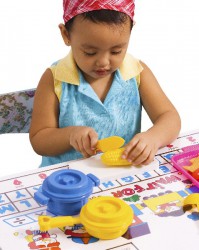It’s the time of year that our common greeting “Have a nice day” turns into “Have a safe and happy holiday”! What does that mean exactly? “Safe” can mean a lot of different things to different people. The most prevalent concern is around holiday parties, alcohol consumption and keeping safe on the road.
Some less discussed topics are regarding food consumption and product safety. You may have recently heard the news about a young girl who ate some Archer Gelato from her local Target store. That gelato had not been appropriately labeled as containing peanuts and she ended up in the hospital. Her father reported the incident, but during the 6 days it took to remove the product from the shelves, it happened to a second child. How can parents be certain that products are appropriately labeled with precautions such as “may contain”, “made on shared equipment with…” or “manufactured in a facility that also processes”?
Food Safety and Child Allergies
Make sure to keep a close eye on food labels, and be very proactive in communications with food manufacturers to ask questions and report issues. One resource is www.kidswithfoodallergies.org. Even if your child does not have a food allergy, it is likely at least one of their friends do, so it is important that when you host holiday parties, there are options for all children.
Another resource is the Allergy Alerts Feed, which allows you to keep posted to foods that have been recalled due to inaccurate or missing labeling requirements.
Another topic for families to stay on top of is product safety. It is so unfortunate to hear stories about a child’s beloved holiday gift actually causing injury, or eventually being recalled due to potential danger. The U.S. Consumer Product Safety Commission (CPSC) estimates that over 120,000 children are treated in hospital emergency rooms for toy-related injuries each year.
Toy and Product Safety
How can we be sure we are buying the safest toys for our youth? Again, it is important to fully read labels, and consider the age appropriateness of the gift. Here are some top tips sourced from the Family Education Network on toy safety.
- Select toys to suit the age, abilities, skills, and interest level of the intended child. Toys too advanced may pose safety hazards to younger children.
- For infants, toddlers, and all children who still mouth objects, avoid toys with small parts which could pose a fatal choking hazard.
- For all children under age eight, avoid toys that have sharp edges and points.
- Do not purchase electric toys with heating elements for children under age eight.
- Be a label reader. Look for labels that give age recommendations and use that information as a guide.
- Look for sturdy construction, such as tightly secured eyes, noses, and other potential small parts.
- Check instructions for clarity. They should be clear to you, and when appropriate, to the child.
- Discard plastic wrappings on toys immediately, which can cause suffocation, before they become deadly playthings.
Read more on FamilyEducation: http://fun.familyeducation.com/toy-safety/safety/29700.html#ixzz3JHCzNhb8

